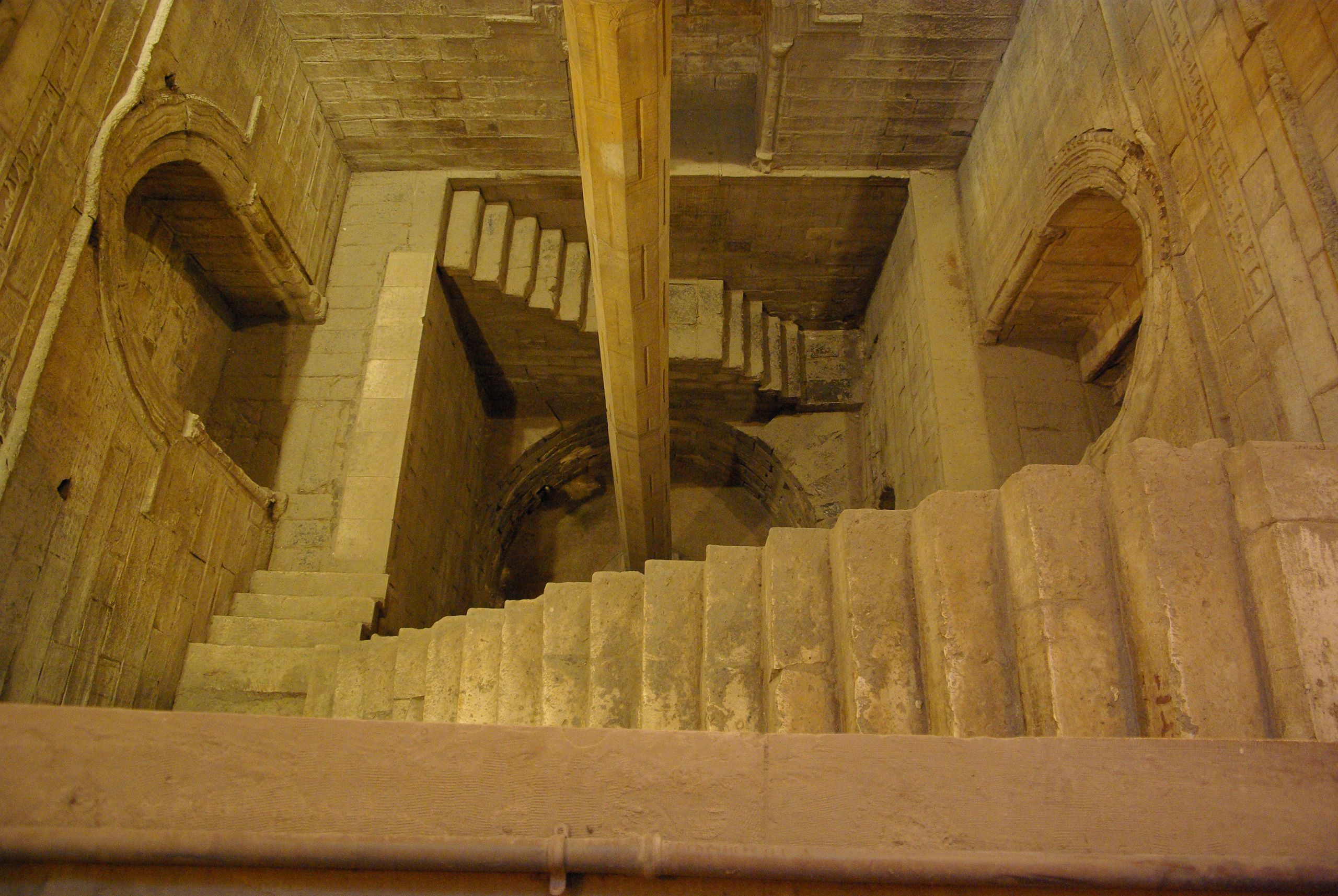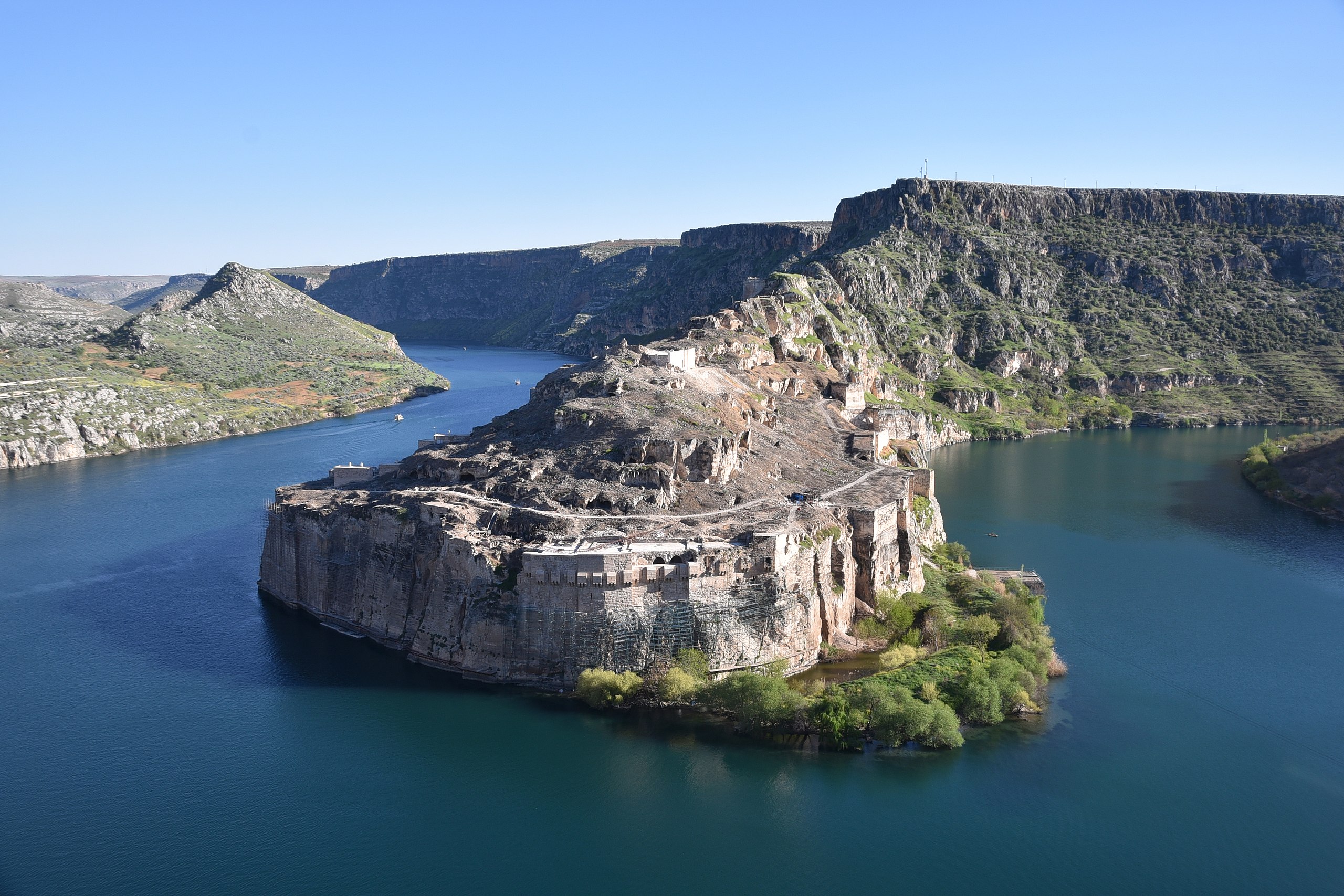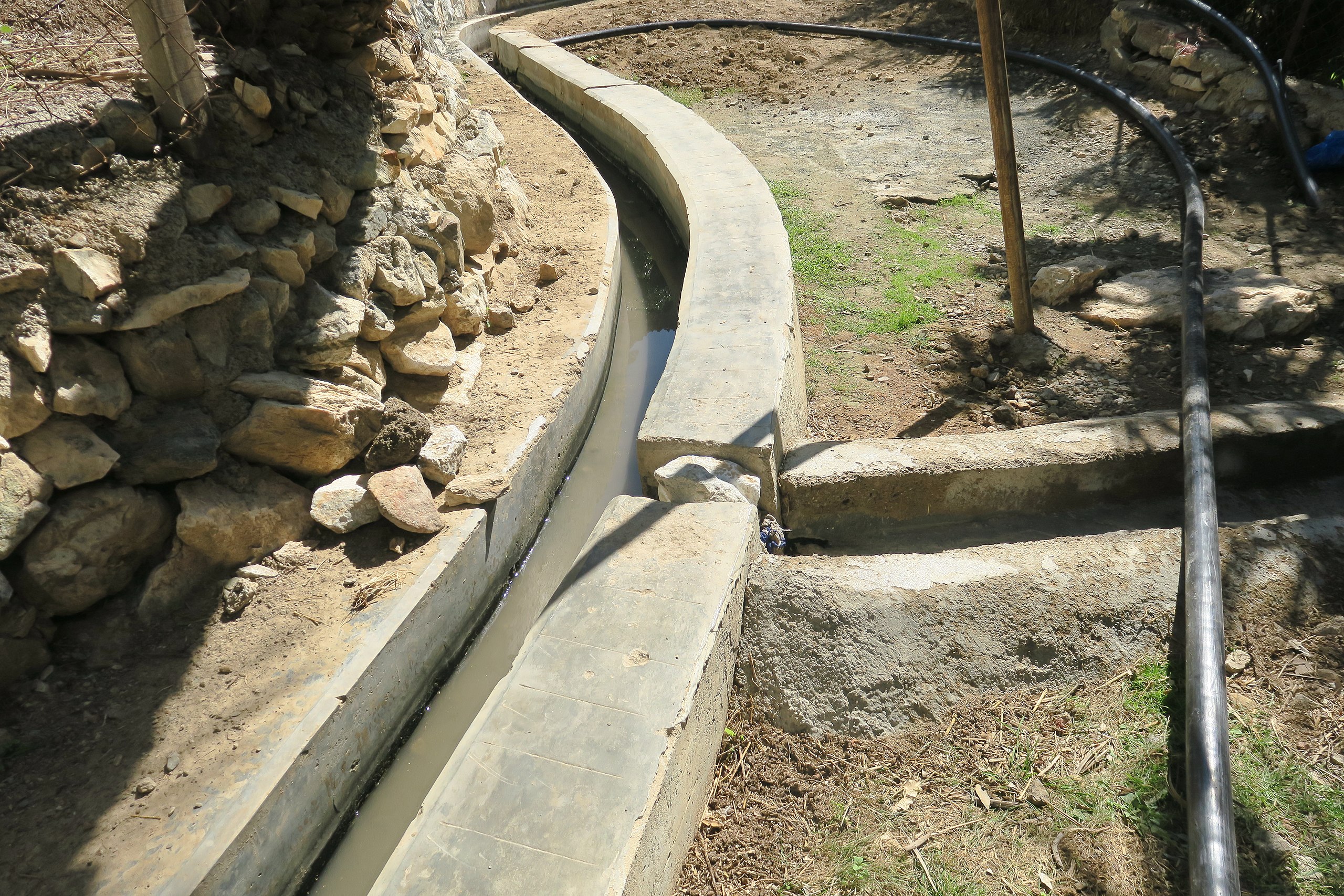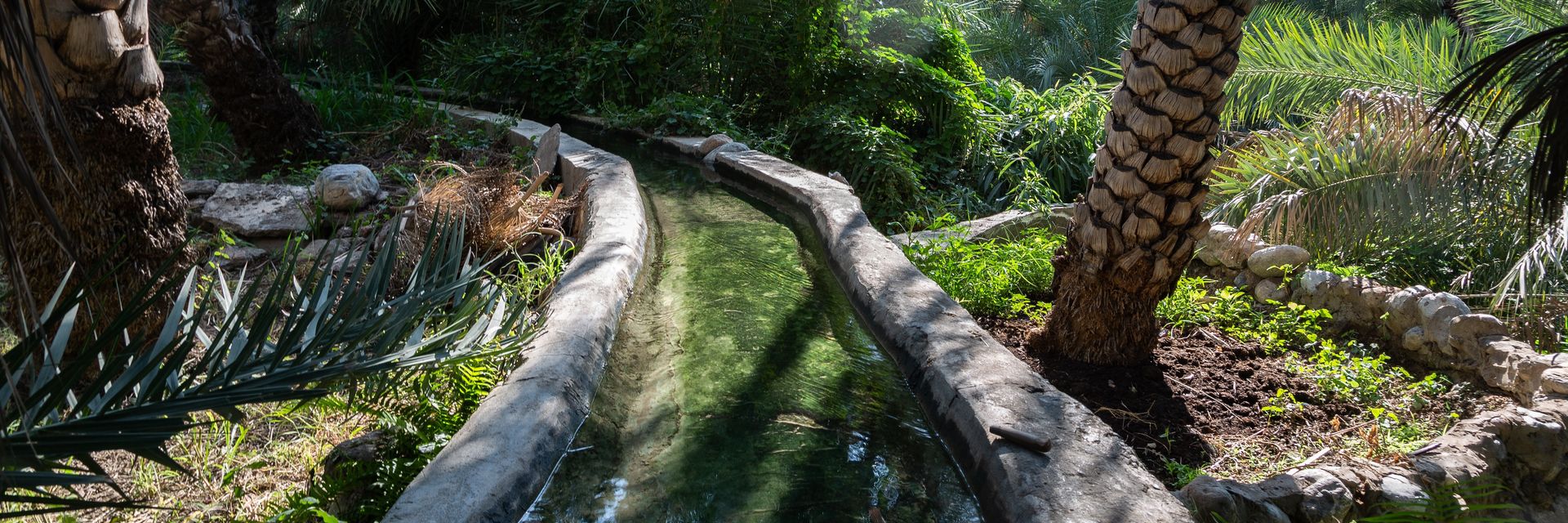Thousands of years ago, the Middle East was home to some of the most advanced irrigation systems in the world. Some of this ancient technology remains in use today.
◊
Apart from Asia’s Gobi Desert, Australia, the Sahara Desert, and Antarctica, the Middle East includes some of the most arid regions on the planet. Blistering days, frosty nights, and a lack of freshwater make for a particularly inhospitable environment. That enough water has been available to humans, plants, and other animals may be surprising. So, how has this area become home to half a billion people?
Ask any experts in archaeology or history why ancient kingdoms flourished across the dry highlands of the Middle East for thousands of years, and irrigation will likely be the unanimous answer. Ancient societies with surpluses of food and consistent access to drinking water owed success and prosperity to creative irrigation solutions.
But how did these systems emerge, and which ones remain in use today? Many diverted water from major rivers and lakes, while some accessed groundwater. The least common solutions involved the storage of rainfall. With knowledge of engineering and geography, we can begin to understand antiquity’s most efficient irrigation systems.
Watch this MagellanTV documentary and imagine the water required to keep Dubai's Burj Khalifa habitable.
Diverting from the Nile
Most people recognize the Nile River as a singular source of freshwater for residents of an otherwise arid region, but scarcity is only part of the reason why ancient farmers tapped into it. First of all, the Nile’s flooding was much more predictable than that of other important water sources across the ancient world.
The ancient Egyptians actually based their calendar’s three seasons off the Nile’s behavior. Akhet was the season of inundation from September through December, during which depth would peak; Peret was the season of emergence from January through April, during which farmers would sow seeds; and Shemu was the season of harvest from May through August. So, planning canals and basins around this clockwork flooding was easy for farmers of antiquity.
The Nile flows north, fed mainly by Ethiopian watersheds and Lake Victoria. Not only does this account for the regularity of flooding, but the concomitant runoff is rich in nutrients for plants. Ancient Egypt was among the few societies that didn’t need to leave plots of land fallow, because the silt from the Nile would ensure the soil’s fertility. Beyond productivity, agriculture along the Nile was actually sustainable, too.
The primary method by which Egyptian farmers took advantage of floods was basin irrigation, a common technique that many ancient societies used. With fields adjacent to the water, farmers would build networks of earthen banks to form long basins both parallel and perpendicular to the river. Silt-rich water would flow from the basin network into adjacent soil, optimizing the region for the next big harvest without reducing soil fertility.
Another important aspect of basin irrigation in Egypt was the shaduf, which was essentially a crane for water. It was a seesaw with a bucket at one end and a hefty rock at the other, allowing farmers to nurse plots especially distant from the basins. Shadufs and basins were the key physical tools, but farmers also used a “nilometer” to measure the height of the Nile. This would allow them to plan for potential famine or floods.
Without today’s scientific advancements, ancient residents of Egypt lived at the mercy of the Nile River. It was full of rich silt, but it was also full of crocodiles and hippos. Thankfully, the Nile worked mostly in Egyptians’ favor, keeping them and their beloved cats hydrated and fed.
 A nilometer in Cairo (Credit: Berthold Werner, via Wikimedia Commons)
A nilometer in Cairo (Credit: Berthold Werner, via Wikimedia Commons)
Diverting from the Tigris and Euphrates
The Tigris and Euphrates rivers of modern-day Iraq have been vital water sources for the Middle East since the advent of Mesopotamia. Though this powerful duo ultimately hasn't been as sustainable a source of water as the Nile, both remained fruitful for hundreds of years before the first millennium CE.
Parts of the Middle East were temperate lands full of plants and animals optimal for human consumption. A stable source of water would have been a major multiplier for any civilization in the region. Thus, there was eventually enough food for nomads to establish settlements and for those settlements to grow into cities by the fourth millennium BCE.
Fed by sources in Anatolia and winding up in the Persian Gulf, both the Tigris and Euphrates rivers sustained what historians call the Fertile Crescent. Many discuss this phenomenon in reference to Mesopotamia, but the region also encompasses the western Levant. The key difference between agriculture in the Levant and Mesopotamian agriculture was that the Levantine climate and soil were suitable enough for societies often to forgo irrigation.
Mesopotamians required a little more ingenuity. A popular technique, basin irrigation, was intuitive enough for Mesopotamian farmers to develop independently from Egyptians. As permanent settlements grew into genuine cities, personal basins graduated to large canals serving multiple farms in a community. Aqueducts served the biggest and most developed societies.
Whereas soil remained fertile enough for independent farmers to handle irrigation across Egypt, the Mesopotamian government stepped in to fund larger works like canals and aqueducts since the Tigris and Euphrates weren’t sufficient by themselves. Despite the greater network of artificial rivers among personal farms, the central idea of basin irrigation remained the most common technique for independent farmers in Mesopotamia.
There’s a whole lot more to agriculture in the Middle East than growing dates! One of the major keys to Mesopotamia's agricultural success was the production of cereal. Barley, wheat, and millet aren’t as perishable as vegetables like tubers. These grains are easy to grow, store, and distribute among the masses. Local governments could easily divvy up their dependable food source among the whole population, allowing for the society’s sustainable growth and maintenance.
 The Euphrates River in Turkey (Credit: Carole Raddato, via Wikimedia Commons)
The Euphrates River in Turkey (Credit: Carole Raddato, via Wikimedia Commons)
Diverting from Oman’s Mountains
Similar to many modern engineering solutions regarding water, the ancient irrigation systems of Oman brought groundwater to the surface of a land with almost no rainfall and few rivers. In Arabic, these systems are called aflaj (or falaj, if singular). Requiring the utmost ingenuity to create, a falaj is a series of tunnels that delivers water from aquifers directly to communities, so it works no matter how little rainfall an area receives throughout the year. In fact, hundreds of aflaj remain in use today after 3,000 years.
Learn what archaeologists have found since 2017 when Oman allowed them to operate for the first time on its territory.
Beyond agricultural irrigation, plenty of water remains usable for drinking, cooking, and bathing. But where does all this water come from? There are actually three different types of aflaj, all of which depend on distinct water sources. Dawoodi aflaj use long, deep tunnels to extract groundwater from sediment; ayni aflaj use similar tunnels to extract water from springs beneath mountains; and ghaili aflaj use dams to divert surface water into canals or tunnels that lead to farmland. Aflaj are found in Saudi Arabia and the United Arab Emirates, as well as Oman.
Of all irrigation techniques employed by ancient Omanis, the falaj was most popular, but the wadi system was a close second. Wadi simply means “valley” or “ravine” in Arabic, typically referring to a dry riverbed that accumulates water after substantial rainfall. As with a ghaili falaj, ancient Omanis took advantage of these wadi by diverting water into pools around which artificial oases would blossom.
Wadi-fed oases were perfect for growing date palms that require copious amounts of water. Earlier, I asserted that Middle Eastern agriculture wasn’t all about dates, but dates are definitely big in Oman. Not only are they enjoyable to eat, but Omanis use them for medicinal and religious purposes. Thanks to masterful irrigation systems, the people of this arid land can grow plants as water-dependent as date palms.
Aflaj and wadi oases require creativity and skill to build, but maintaining them is also a complex, multidisciplinary endeavor that requires knowledge of engineering, hydrology, and botany. Because aflaj continue to support communities across Oman today, the government has actually maintained aflaj as both genuine utilities and historical sites. Thus, this ancient technology presents an opportunity for Oman to support its citizens and attract tourists or researchers at the same time.
 A falaj in the United Arab Emirates (Credit: Altaf Habib, via Wikimedia Commons)
A falaj in the United Arab Emirates (Credit: Altaf Habib, via Wikimedia Commons)
Other Marvels
Aflaj and basin irrigation have been the most enduring practices across the Arabian peninsula and the larger Middle East. Outside Oman, aflaj have gone by different names, including qanat, kariz, and foggaras. Despite superficial differences, all names refer to the general practice of using tunnels to extract groundwater.
Still, subtle regional differences in technology have risen in response to different water sources. For example, receiving slightly more rainfall than Oman, Yemen has been more dependent on wadi oases. Also, in the Levant, where the climate is less arid, ancient societies could divert and store water with huge aqueducts and cisterns – Petra is a notable example.
As global populations have increased, fewer communities have tapped into these ancient systems to receive water. Many use ancient irrigation exclusively for agriculture. Whether communities across the Middle East continue to rely on aflaj among other forms of irrigation, 3,000 years of use remains a testament to the efficiency of these enduring technologies.
Ω
Ben Sernau is a prolific marketing professional whose articulate content has boosted SEO for businesses across the nation. Between a growing YouTube channel and work for clients, Ben keeps his hands full with a variety of topics. Ben is also an avid gamer, enjoying any topic tangentially related to games. He writes from Mamaroneck, New York.
Title Image: Traditional falaj irrigation channel in date palm plantation in Oman's Wadi Abyad (Licensed from Adobe Stock)



